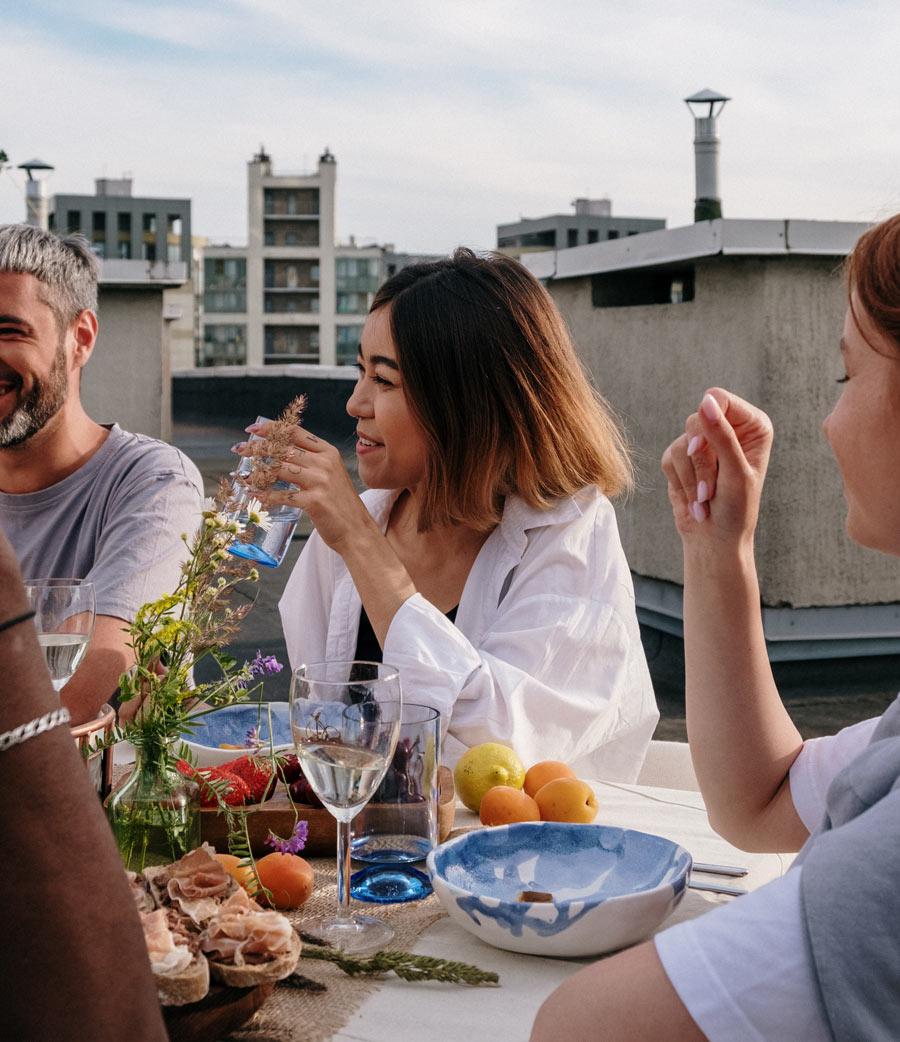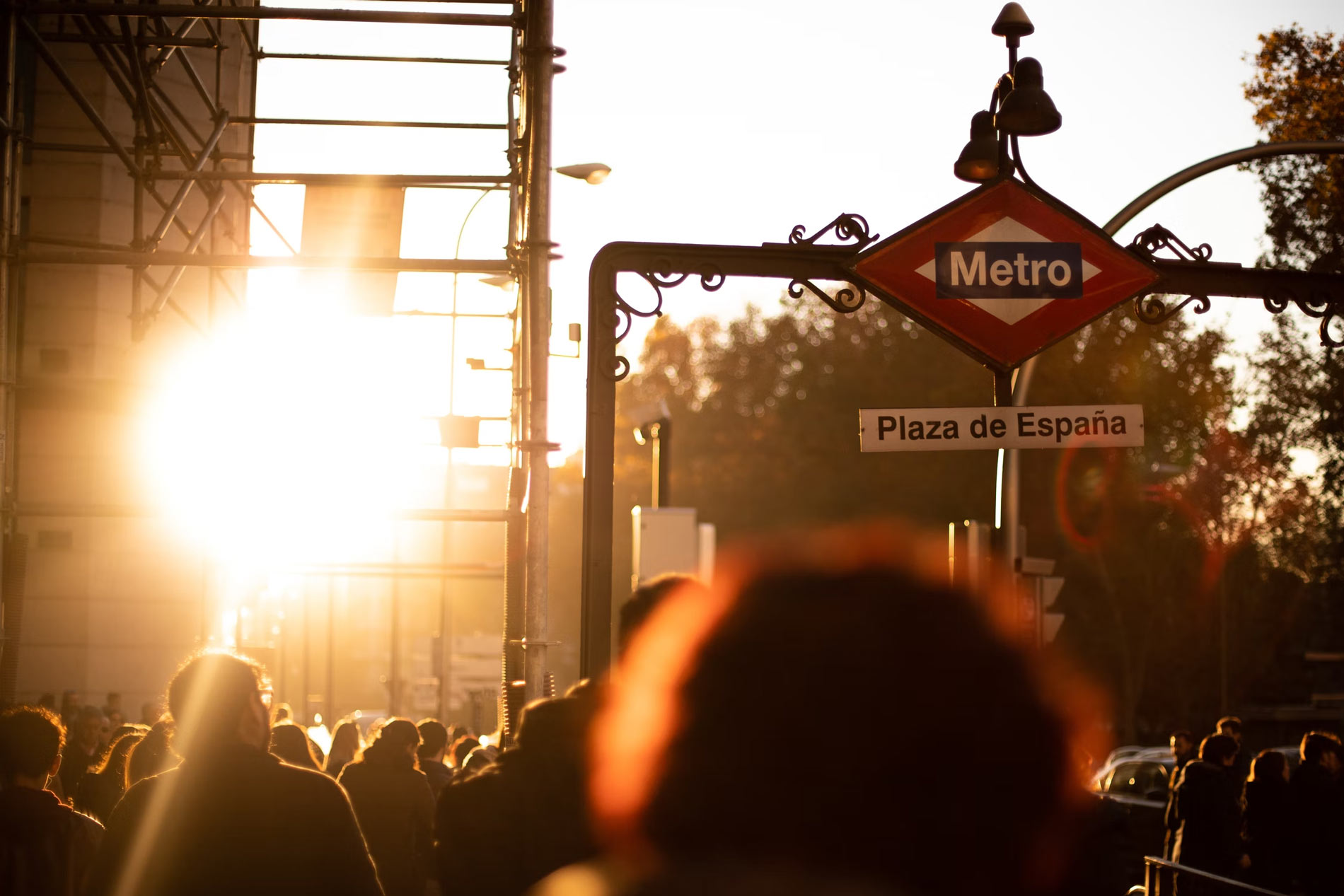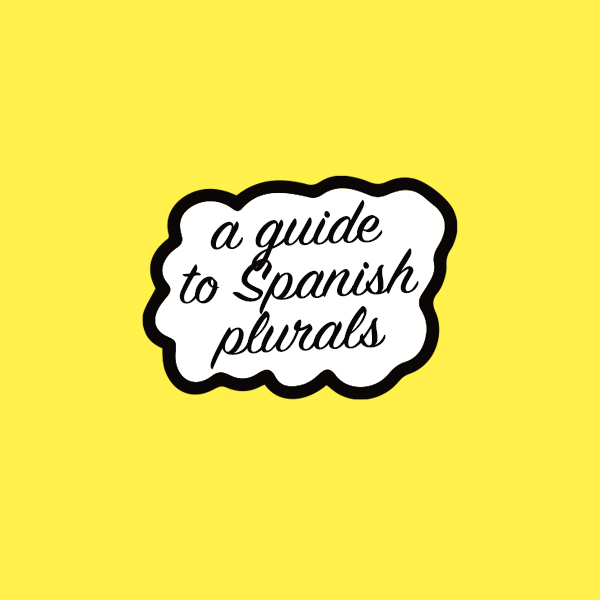Spanish masculine and feminine – a guide
This is a custom heading element.
Well, if you’re learning Spanish you definitely need to know which gender to use with nouns and adjectives. This is because every noun is either masculine or feminine and this affects the words you use for the and a, as well as the spelling of the adjectives you use with them. Confused? You won’t be after you’ve read our guide!
So, first things first, let’s look at the different genders and how that affects the articles we use. There are two types of articles, el artículo definido (the definite article) and el artículo indefinido (the indefinite article). These are fancy terms for the and a/an. Look at this table and you’ll see what we mean:
| El artículo definido (the) | El artículo indefinido (a/an) | ||||
| Singular | Plural | Singular | Plural | ||
| Masculine | el | los | Masculine | un/uno | unos |
| Feminine | la | las | Feminine | una | unas |
Once you understand this table, then the next section will make more sense (tendrá más sentido). You really must memorise the grid above as you’ll always need to use these words when speaking and writing in Spanish.
Right, so how can we tell whether a word is masculine or feminine? We can look at some rules (reglas) that you can use to help you, but please remember that there are always exceptions and you’ll just have to learn those separately.
1. Words that end in “o” are usually masculine
This is a basic rule, and works most of the time. The vast majority of words which end in “o” take a masculine article and adjective. For example:
- El médico – The doctor
- Un zapato – A shoe
- El gato negro – The black cat (which reads “the cat black”)
¡Ojo! (Be careful!) – some common words which end in “o” are actually feminine. For instance:
- La mano – The hand
- La radio – The radio
You’ll just have to learn these as you see or hear them when practising your Spanish.
2. Most words ending in “a” are feminine
Another basic idea to learn is that most words with an “a” at the end take a feminine article and adjective. Let’s see a few examples:
- La camisa – The shirt
- Una tortuga – A turtle/tortoise
- Una lata azul – A blue can
But, just like with rule 1, there are some “a” words which are masculine. These often end in “ma” or “pa”, like:
- El mapa – The map
- Un problema – A problem
3. If a word ends with an accented vowel (e.g. “í”) or a consonant other than “d” or “z”, it is probably masculine
Now we are getting into the realm of probably as, like I’ve said before, there are always exceptions. Here are some of examples of words which follow this rule.
- Un tumor – A tumour
- El atún – The tuna
- Un colibrí – A hummingbird
- El papel – The paper
- Un autobús – A bus
4. Certain endings like “ión”, “d” and “z” are likely to be feminine
You’ve probably guessed by now that this rule, like all the others so far, also isn’t 100% infallible. However, it will help you to identify a feminine word in most cases. Words which are feminine in this category include:
- La ciudad – The city
- Una estación – A station
- La nariz – The nose
5. Some words you have to learn that they're masculine or feminine because they just are
If you’ve followed the guidelines above and still got the wrong gender, you’ve found one of the many exceptions. The best way to improve your Spanish, as with any other language, is to read and listen to as much material as possible to you can pick up the exceptions in a more natural way. Then, when you practise speaking and writing Spanish, you’ll be less likely to make mistakes (cometer errores).
6. Gender also affects the spelling of the adjectives used to describe nouns
A final point to make is that the adjectives (adjetivos) we use to describe our nouns (sustantivos) change their spelling according to the gender and number of the nouns used. It’s quite straightforward (sencillo) – just look at the table below for how this works.
| Adjectives ending in “o” | English | ||||
| Singular | Plural | Singular | Plural | ||
| Masculine | El/Un perro negro | Los/Unos perros negros | Masculine | The/A black dog | The/Some black dogs |
| Feminine | La/Una silla negra | Las/Unas sillas negras | Feminine | The/A black chair | The/Some black chairs |
| Other adjectives | English | ||||
| Singular | Plural | Singular | Plural | ||
| Masculine | El/Un coche verde | Los/Unos coches verdes | Masculine | The/A green car | The/Some green cars |
| Feminine | La/Una puerta marrón | Las/Unas puertas marrones | Feminine | The/A brown door | The/Some brown doors |
Like the other elements of gender, we do have a couple of adjectives which don’t follow these patterns. For example, naranja (orange) never takes an “o” at the end and becomes naranjas in the plural form. You’ll soon get the hang of all this once you start studying Spanish and using it on a daily basis.
There you have it! A quick guide to gender in Spanish just to help you get started understanding how nouns and adjectives work in this amazing language.
If you want to learn more about Spanish grammar, and develop your language skills, come and take a course here at Hablamos. We love helping you to understand this global language and are waiting for you to join us! Hablamos - full-on Spanish!
The difference between ser and estar
This is a custom heading element.
Well, in fact, in Spanish this is a very important question to ask when using the verbs ser and estar, both of which mean to be! But how can there be two verbs which mean the same thing you might be wondering? It all has to do with the specific idea you want to transmit to the person you’re speaking to, and also there are certain set expressions (frases hechas) which need either ser or estar.
In general terms, we can say that:
- Ser is used for things which are more permanent or definite
- Estar is used for states or more temporary conditions
This is only a very basic guideline to follow as we will show you some examples and you’ll see that there are some cases where something you might expect to use ser actually takes estar or vice versa. When learning Spanish it’s always best to look at lots of examples (ejemplos) to help you better understand. Also, always remember that when practising your speaking and writing that you’re going to make mistakes and that this doesn’t matter as it’s the only way to improve (mejorar).
Let's start with ser
Here are a number of situations in which you’ll need to use this verb.
| Reason | Spanish examples | English translation |
| For personal characteristics and traits | Juan es una persona muy inteligente | Juan is a very clever person |
| For characteristics of objects and places | Madrid es la capital de España. Es una ciudad grande | Madrid is the capital of Spain. It is a big city |
| Talking about jobs | Soy profesora de inglés | I am an English teacher |
| To show belonging | Ese boli es de Paula | That is Paula’s pen |
| To show origin | Son de Australia | They are from Australia |
| For date and times | Son las cinco de la tarde. Hoy es el 25 de julio | It is 5pm. Today is the 25th July |
| In passive structures | Fue construido en 1999 | It was built in 1999 |
| For mathematical calculations | Tres por tres son nueve | Three times three is nine |
| When the next verb is in the infinitive | Lo que hace falta es llamar a la policía | What we need to do is call the police |
Can you see how that works? All of those things are much more permanent in nature and it’s very difficult to change them. For instance, if you have blue eyes today, you’ll probably have blue eyes for the rest of your life and so you use ser to describe them.
Now let's take a closer look at estar
| Reason | Spanish examples | English translation |
| For location of people and places | Estoy en el supermercado. Bilbao está en el norte de España | I am in the supermarket. Bilbao is in the north of Spain |
| With adjectives to make descriptions of people/things and their state at the moment | El metro está lleno de gente ahora mismo. El proyecto todavía no está terminado. Perdona, pero la pizza está fría | The metro is full of people right now. The project still isn’t finished. Excuse me but this pizza is cold |
| To make the continuous tenses | Estoy viendo la tele. Estaban jugando en el patio | I am watching the TV. They were playing in the playground |
| For matters related with health (including death!) | Pablo está enfermo. Javier está muerto | Pablo is sick. Javier is dead (Yes, I know this seems strange but it’s the rule!) |
Apart from these rules (reglas), both ser and estar are used in some set expressions as I mentioned earlier. Here are a few to get you started:
- Expressions with ser
- Ser la oveja negra – To be the black sheep
- Ser de provecho – To be of benefit/to be good for
- Ser una rata – To be tight-fisted
- Expressions with estar
- Estar hecho polvo – To be exhausted
- Estar como una cabra – To be crazy
- Estar hasta las narices – To be fed up
So there you have it! A quick guide to these two incredibly important verbs. If you want to speak fluent Spanish you’ll definitely need to work on being able to use both ser and estar correctly. You should try to practise speaking and writing Spanish as much as possible to make sure you learn the differences. Also, reading and listening to as much as possible in Spanish when learning the language will help you really understand.
Of course, the best way to improve is to come and take a course with us here at Hablamos. With both online and face-to-face classes, you can take advantage of (sacar provecho de) our expertise whenever and wherever suits you. Hablamos - full-on Spanish!
How to keep cool in Madrid in summer!
This is a custom heading element.
August in Madrid can be a killer! (¡es matador!) With temperatures reaching the high 30ºC and the heat emanating from the tall buildings we feel you may need some tips on how to keep your cool this summer! Ha ha!
Although, if you’re studying with us at Hablamos Spanish school, you will benefit from the AC we have for sure, as a break from the heat outside ☺.
Comer y beber
No comas grandes cantidades. Come poco y a menudo.
(Don’t eat heavy, big meals. Eat little and often.)
Toma platos ligeros como ensaladas, fruta y batidos.
(Eat light dishes like salads, fruit and smoothies.)
Bebe muchos líquidos, preferiblemente sin gas, como agua o té frío.
(Drink a lot of liquids, preferably without gas, like water or iced tea.)
And here you can practise your communicative Spanish skills too!
In a bar/terrace:
¡Hola! Querría tomar un café con hielo, por favor.
(We’d like an ice coffee please.)
Queremos dos cervezas, por favor.
(We want two beers please.)
¿Qué ropa llevar?
Evita la ropa muy ajustada, es incómoda y te hace sudar.
(Avoid tight clothes – they are uncomfortable and make you sweat.)
Lleva prendas de materiales naturales como algodón, que transpiren.
(Wear cotton, not synthetic fabric that can breathe.)
Lleva zapatos amplios, cómodos y abiertos porque los pies suelen hincharse con el calor.
(Wear wide, comfy and open shoes because your feet tend to swell in the heat.)
In a shop:
¿Tenéis algo en algodón o telas naturales?
(Have you got anything in cotton or natural materials?)
Estoy buscando una camisa para el verano.
(I’m looking for a shirt for the summer.)
En casa
Durante el día, mientras hace sol y mucho calor, baja las persianas y cierra las ventanas.
(During the day, whilst it’s sunny and hot, lower the blinds and close the windows.)
Por la noche, cuelga una toalla mojada en agua fría en la ventana abierta para que entre más fresco.
(At night, hang up a soaked towel in the open window to make the air cooler.)
¡Menos es mejor! Hay que retirar las cosas que conservan el calor como alfombras, cojines, mantas, etc.
(Less is better! Put away all the things that store heat like rugs, cushions, blankets, etc.)
Haz la cama con sábanas húmedas en agua fría o recién sacadas de un armario frío.
(Make the bed with sheets slightly wet with cold water or taken from a cold wardrobe.)
En lugar de dormir con el aire acondicionado encendido (¡es muy caro!), utiliza un ventilador de pie o de techo.
(Instead of sleeping with the AC on (very expensive!) use a floor or ceiling fan.)
Cuelga en la pared de tu dormitorio fotos grandes del mar o un bosque para crear la sensación de frescura y naturaleza.
(Put up some photos of the sea or a forest on your bedroom walls to make it feel fresher and cooler and feel like you’re in nature.)
¿Qué hacer en Madrid?
Busca una terraza con nebulizador de agua para refrescarte.
(Find a terrace with water sprinklers to keep you cool.)
Ve al cine y aprovéchate de su aire acondicionado.
(Go to the cinema and take advantage of their air con.)
Ve al parque de Retiro, Madrid Río o a la Casa de Campo con amigos y llévate un picnic.
(Go to the Retiro park, Madrid Rio or the Casa de Campo with friends and take a picnic.)
Here’s to a cool Madrid summer to practise Spanish and have fun!
Hablamos - full-on Spanish! ☺
5 tips on how to study Spanish in Madrid
This is a custom heading element.
Ok, so you’ve made the decision now to come to Madrid and learn Spanish – great! ☺ That’s the first hurdle over with! Did you know that Spanish is second only to the Chinese language in the number of people who speak it? So, there’s no doubt that knowing Spanish is going to be a really good asset for you, both for travelling and for working, right?
And what advantages are there to studying Spanish in its country of origin? Well frankly – a lot! Here in Hablamos Spanish school we usually recommend students to come over with a basic understanding of Spanish already acquired in your country of origin. That way you’ll make a faster progress once here in Madrid. Learning the rudiments of Spanish at school or college is easy and you don’t really need to be in Spain to do that. But once you acquire a certain level of Spanish then you really do need to come over here and start to practise it in everyday situations to practise fluency, pronunciation and increase your range of vocabulary.
And on top of that, I’m sure you’re aware of the general life skills and experience that travelling and living amongst people of a different culture can bring by immersing yourself in a new culture. ¡Viaja y ábrete de mente! (travel and open you mind) – as the Spanish say ☺ This will surely prove to be one of the most enriching experiences of your life!
So, have I convinced you? ha ha! Right, let’s look at some of the best ways then to study Spanish once you’re here in Madrid.
1. Study at Hablamos Spanish School
Why? Because we are the experts in language learning. Our sister school Cambridge House has been teaching English as a foreign language for over 30 years in Madrid. We know what is important about learning a language: being able to communicate well by practising ALL the skills of listening, writing, reading and speaking and all in a friendly, fun and professional environment. ¡Estarás a salvo en nuestras manos! (You’ll be safe in our hands).
2. Live with Spanish people
A typical mistake of a lot of people who go abroad to study a language is that they end up living with and going out with people of their same nationality. And the temptation of then speaking in your native language is increasingly difficult to avoid. ¡Compartir piso con españoles o gente de otros países es clave! (Sharing a flat with Spanish people or people from other countries is the key!) You’ll learn all the vocabulary that goes along with all the household chores and daily routine: cocinar (cooking), fregar (washing up), hacer la cama (making the bed), limpiar (cleaning), recoger (tidying), hacer la compra (shopping) and compartir las comidas (sharing meals). And at the same time, you’ll make friends who could last a lifetime! You could even organise some clases de intercambio (language exchange classes) with your flatmates and help each other improve their Spanish and English/Chinese.
3. Getting out and meeting people in town
Another mistake is staying at home and not getting out enough! It’s vital to go out and join clubs and chat to people you meet at bars and concerts. Your Spanish teachers at Hablamos will help you with this and suggest great places to get to know and what to do there. Apuntarse a un gimnasio (join a gym) and get in a class with other Spanish people is a great way to meet new people. Ir a un pub irlandés (go to an Irish pub) – there are lots of them here in Madrid and the people who go there are always happy to strike up conversations with people from other countries. Madrid is a very sociable place to live – a lot of us came over here to study Spanish for a year and twenty years later, we’re still here! The people are very welcoming and happy to speak to foreigners, who they fondly refer to as guiris!. Madrid is also a really safe place to live. I’ve never known another city where you can find so many people out in the streets of the centre at 3am and even get traffic jams! The metro closes at 1:30am but there are night buses – buhos – literally called owls- which will get you home at all hours.
4. Travelling around the surrounding areas
The great thing about Madrid is that there are amazing things to do very close to the city. Visit the nearby historic towns of Segovia, Ávila, Cuenca and Toledo. They are all easily, and cheaply, accessible either by train or bus on a hour-long ride from the city. Join a hiking group! There are many of these groups on internet that you can join for a day out in the nearby mountains and go with experienced hikers who can show you new routes and get you to meet new people. Do exercise and make friends at the same time! What’s not to like? ☺
5. Cultural visits
Visiting museums and art galleries and buildings of interest in Madrid is also a great way to both soak up the local culture and improve your vocabulary at the same time. You’ll learn a lot of new words connected to the arts and have to communicate in the language to buy your tickets and learn how to pay with the local currency (euros). Watching a film in Spanish at the cinema or seeing a pay at the theatre is great to practise your listening skills too. Visiting and studying in some of big municipal libraries is also quite an experience.
Useful Vocabulary
- Ir al cine o teatro
- Apuntarse a un grupo de trekking
- Comprar entradas
- Estudiar en una biblioteca
- Salir de juerga (go out on the town)
Well, I hope this has helped a little with your plans for what to do in Madrid and how to improve your Spanish while you’re here ☺. And don’t forget that you can always ask us anything here at Hablamos and we’ll be happy to help!
Hablamos, full-on Spanish ☺
Face-to-face and Online Spanish courses: The pros of both
This is a custom heading element.
Nowadays there are a myriad of ways to learn a language, and recently many academies, including here at Hablamos, have begun offering not only face-to-face classes but also the same courses online. Here we’ll talk about the pros of both options so you can make your mind up as to which might better suit your needs.
The face-to-face option
Contact with native speakers
If you’re actually going to speak Spanish to any degree, of course you need to interact with other speakers of that language. Not only should this be your Spanish teacher (professor de español), but also you need to get out and about and speaking with people in real life. What better way to do this than by coming to live and study in Madrid? From the moment you arrive you’ll need to buy food from the supermarket, navigate your way around the city and much more. I remember the first time I lived in Spain (yes, I’ve had more than one spell in Spain before making it my permanent home!), I needed to find a flat and had to call different people to ask to view places. It was a bit daunting at first, but practice makes perfect! At Hablamos, we’ll help you find your feet (adaptarse) and make sure you get the most out of your experience.
Immersing yourself in the culture
Although we do love online courses at Hablamos, they aren’t quite the same experience as being surrounded by the culture of the country whose language you’re trying to speak. If you’ve read any of our other blogs, you’ll already know that Madrid is filled to the brim (está a tope) with amazing cultural activities, museums, nightlife and more. The only way to enjoy all of this is to come and do a face-to-face course at Hablamos so that you can experience it all first-hand. Also, as Madrid is basically in the middle of Spain, it’s an amazing base from which to take excursions and visit all of the other wonderful towns and cities the country has to offer. Why just make do with looking at photos of Spain when you can see it all with your own eyes?
Making new friends (and possibly having a whirlwind romance!)
Just to be clear, I’m not advocating here that the best reason to come to study in Madrid is to meet the love of your life as I know a lot of you have probably already found “the one”. However, it is obvious that by actually coming to learn Spanish in Spain you’ll meet loads of cool new people and hopefully make some friends for life. Your classes at Hablamos will be full of people living the same adventure and they’ll be wanting to get out and explore just as much as you. That gives you a great basis for meeting other people who live in Madrid as you’ve got a ready-made group to get started with. Speaking of the romantic option, suffice it to say that I met the man of my dreams only a week after arriving in Madrid so you never know what might happen!
Taking a course online
The chance to learn from your own living room
A massive bonus of the move to online education is that you can easily learn a language from the comfort of your own home. You’ll still get all the benefits of small groups, excellent teachers and contact with native speakers but if you’re reading this from halfway around the world, coming to live in Madrid might be a bit impractical. Online learning has come a long way since the days of simply doing endless repetitive exercises and no chance to speak. Now, we can provide you with the exact same interactive classes as you would expect from a face-to-face course.
Fewer expenses
It’s undeniable that taking a course in another country can be a big investment, although there are many advantages which we’ve talked about above. While both face-to-face and online courses cost the same as the teaching and learning experience is of the same quality, you don’t need to worry about accommodation and other expenses when taking an online course. Obviously, we at Hablamos help you with organising your stay here in Madrid if you decide to come over, but we want to offer everyone (todo el mundo) the benefits of learning Spanish. That way, even if you can’t afford the cost (or time!) to come and live in Madrid, you still get to improve your Spanish skills, whatever you need the language for.
Personal preferences
Some of you probably don’t fancy commuting to a school every day. Others possibly like sitting around in pyjamas all day. Maybe you just want to be in your own space so there are fewer distractions when you’re in class. If you identify with any of these, an online Spanish course might be better for you.
Whatever your needs, Hablamos has a Spanish course to suit your personal situation. Take a look at our website and contact us for more information and we’ll find the right solution for you – let’s do it! (¡a por ello!)
A guide to Spanish plurals
This is a custom heading element.
After all, you can’t go around always talking about everything in the singular – that would be a bit weird! So what does the plural look like in Spanish and how do we form it?
Firstly, we need to look at the plural of el artículo definido (the definite article) which means “the” and el artículo indefinido (the indefinite article) which means “a/an”. In Spanish, there are both masculine and feminine nouns and so we have a few forms of these articles to have to learn.
| El artículo definido (the) | El artículo indefinido (a/an) | ||||
| Singular | Plural | Singular | Plural | ||
| Masculine | el | los | Masculine | un/uno | unos |
| Feminine | la | las | Masculine | una | unas |
It’s really not that complicated, is it? So, once you’ve decided what type of sustantivo (noun) you’re dealing with, we can get on with making it into a plural form. There are a few spelling rules which you can follow that make this whole process much simpler. Let’s take a look.
1. If a noun ends in a vowel (a,e,i,o,u) we simply add “s”
Por ejemplo, (For example,)
el niño > los niños
the boy > the boys
la fecha > las fechas
the date > the dates
un coche > unos coches
a car > some cars
una mariposa > unas mariposas
a butterfly > some butterflies
2. If a noun ends in most consonants, add “es”
Por ejemplo, (For example,)
el professor > los profesores
the teacher > the teachers
la universidad > las universidades
the university > the universities
un árbol > unos árboles
a tree > some tres
una mujer > unas mujeres
a woman > some women
3. For nouns that end in “z” we add “es” and change the “z” to “c”
Por ejemplo, (For example,)
la actriz > las actrices
the actress > the actresses
un lápiz > unos lápices
a pencil > some pencils
4. If a noun ends in “ión”, we remove the accent (´) from the “o” and add “es”
Sometimes, as you’ve probably noticed, words have accent marks above certain letters. There are some rules to help you with this, but for now just remember that words ending in “ión” drop the accent when we make the plural.
Por ejemplo, (For example,)
la televisión > las televisiones
the televisión > the televisions
el avión > los aviones
the plane > the planes
5. Some words taken from other languages do not follow all the rules above and simply add “s”
Spanish, like any other language, has a lot of loanwords or words which have been borrowed from other languages. These often have different spellings than standard Spanish words would allow, and so the standard plural rules don’t always work.
Por ejemplo, (For example,)
el parking > los parkings
the car park > the car parks
un camping > unos campings
a campsite > some campsites
un bistec > unos bistecs
a beef steak > some beef steaks
6. Some words don’t change between singular and plural
We’re not going to go over all the reasons for this here, but just be aware that some words do not change between singular and plural. Here are some examples.
el martes > los martes
Tuesday > Tuesdays
(in fact, all days of the week end in “s” in singular and plural)
una crisis > unas crisis
a crisis > some crises
7. Mixed masculine and feminine groups become masculine in the plural form
This is nothing about gender or favouring males or females, rather it’s a linguistic feature of the language. If a group contains a male and a female, the plural form is always masculine.
Por ejemplo, (For example,)
un gato + una gata > unos gatos
a male cat + a female cat > some cats
11 niños + 13 niñas > 25 niños
11 boys + 13 girls > 25 children
So, when learning Spanish, always try to learn the article and plural of words when you see them. It’ll save you a lot of time later when trying to use your vocabulary quickly when speaking Spanish with other people. You’re bound to make mistakes, but that’s the beauty of learning a language and people will always try and help you to find the right form of the word you need.
Here at Hablamos, we can help you to get you head around these rules and be better able to use plurals accurately in your spoken and written Spanish. Sign up for one of our courses today!
An Art Lovers Guide to Madrid!
This is a custom heading element.
But, if you intend to learn Spanish in Madrid with us in Hablamos, treat yourself and learn about its Art, too! This city has world-renowned museums and galleries that house some of the world’s greatest pieces by the most revered masters. First among them is the Prado! We know you usually have to pay to visit it, but some of the most important museums in Madrid could be visited for gratis.
First time visitors:
With the largest collection of Spanish art and a massive catalogue that consists of other Renaissance and Baroque masterpieces, the Prado is the most visited attraction in Madrid (except maybe for the famous football stadium of Real Madrid – Santiago Bernabeu! ☺). It is located in a beautiful 18th century Neoclassical building, designed by the architect Juan de Villanueva in 1785 and opened to the public as the Museo Nacional del Prado for the first time in November 1819.
It contains works of some of the best artists of their time like Francisco Goya, El Greco, Hieronymus Bosch, Fra Angelico, Diego Velázquez, Raphael, and Titian. Your Prado Museum tickets will expose you to a world of masterpieces, so before you go, here’s a quick guide to all you need to know about Prado Museum Madrid.
What to know Before You Go to the Prado Museum:
Best time to visit – Late afternoon
Suggested duration – 3 Hours
Starting Prado Museum ticket price – €15
Closest Subway Station – Banco de España
Opening Hours (Horario de apertura)
Monday to Saturday: 10:00 AM – 8:00 PM
All Sundays, January 1, May 1, and
December 25: 10:00 AM – 7:00 PM
January 6, and December 24 and 31: 10:00 AM – 2:00 PM
Must-See Exhibits at the Prado Museum:
Francisco Goya’s La Maja desnuda
Diego Velázquez’s Las Meninas
Hyeronimus Bosch’s triptych The Garden of Earthly Delights
Raphael’s The Cardinal
Titian’s Venus and Adonis
Here is a useful floor plan for you to study before going and allow you to plan your visit – some people say it takes 3 days to see everything in the museum!
https://content3.cdnprado.net/doclinks/pdf/visita/plano2021-07-12.pdf
Useful Vocabulary:
Now you know when to visit, we can look at a few helpful words to make sure you are equipped to ask questions to make the most of your visit.
| Spanish | English |
| Pintor | Painter |
| Escultor | Sculptor |
| El artista | The artist |
| Bellas Artes | Fine arts |
| Exposición | Exhibition |
| Galería | Gallery |
| Exhibir | To exhibit |
| Audio guía | Audio guide |
Expressing opinions and tastes:
¿Qué te parece …? what do you think about …?
¿Qué te ha parecido …? what did you think about …?
Me parece muy interesante I think it’s very interesting
Me ha parecido muy interesante I thought it was very interesting
Me gusta … I like …
Me ha gustado I liked it
Me gusta más … que … I prefer … to …
No me gusta … (en absoluto) I don’t like … (at all)
Prefiero … I prefer …
Here in Hablamos, your Spanish school in Madrid, we teach you all about how to communicate in Spanish in all areas: work, studies and social environments.
We believe that to learn a language well, you need to immerse yourself in its culture too and in that way, understand the language better. And let’s face it – it’s more fun that way too, right? ☺
So, we’re here waiting for you in Madrid to have the full Spanish Experience!
¡Hasta pronto!
Learning all the time with Hablamos! ☺
Ernest Hemingway's Madrid
This is a custom heading element.
there are still ways to visit some of the same establishments, hotels and museums that inspired him to write books such as Death in the Afternoon or The Sun Also Rises. Here you will learn about a few of those places and why they were so important to “Don Ernesto.” ☺
Aguilar
Hemingway stayed in this boarding house (pensión) with his family between 1923 and 1926. This establishment can still be visited and his room was Number 7. (Lucky for some!)
Hotel Madrid Gran Vía
Still one of Madrid’s iconic locations on the Gran Vía, Hemingway mentions the establishment in Night Before Battle and in The Fifth Column. You can still pop in for a drink but don’t expect the same kind of atmosphere Don Ernesto was so fond of. ¡Los tiempos cambian!
Botín
Claiming to be “el restaurante más viejo del mundo”, Hemingway used to eat roast suckling pig (cochinillo) here. There are stories that he also tried to learn to cook Paella at Botín but let’s just say it was better he just stuck to his writing. The novel, The Sun Also Rises, ends with a scene in this same dining room. The restaurant is still worth a visit to try their famous huevos fritos con patatas.
Museo Chicote
Mentioned in his short story, The Denunciation, another of “Don Ernesto Hemingway’s” favourite bars! No visit to Madrid would be complete if Bar Museo Chicote weren’t on the list! The reviews are still positive so maybe you can see the world through Ernest’s eyes. This iconic bar situated on Madrid’s Gran Via was also a popular haunt for Ava Gardner when she lived here in the 60s.
Las Ventas Bull ring (Plaza de toros)
“If you really want to learn about bullfighting, or if you are ever very interested, sooner or later you will have to go to Madrid”. Quote from Death in the Afternoon, a classic of bullfighting literature. You should go and see it for the history even if you don’t want to watch the “sport”. It is a spectacular building in its own right and the local people who have yearly passes take it very seriously indeed and will not hesitate to tell the bullfighter (torero) exactly what he’s doing wrong! Ha ha!
Prado Museum (museo)
As mentioned before in these blogs, the Prado is a must-see. Did you know Hemingway was passionate about the museum’s works? You can wander through the halls for hours imagining the inspiration los cuadros (paintings) gave to Hemingway’s greatest works.
El Retiro Park
The Retiro is worth a visit at any time of the year for a hundred different reasons. One of those is that Hemingway was also a fan and El Retiro appears in For Whom the Bell Tolls.
Villa Rosa
Hemingway knew how to enjoy himself into the wee hours of the morning (la madrugada). This renowned flamenco house, a landmark of the most traditional Madrid nightlife, was regularly frequented by the writer (and others such as Ava Gardner.) It may be a bit more touristy than it used to be but it is still well worth a visit.
NH Collection Madrid Suecia
Last but no means least, this hotel is where Hemingway stayed in the 50’s. If you want the true Hemingway experience, ask for his signature cocktail (cóctel) named for the great man. That’ll be “Un Ernesto por favor!”
So, have I convinced you to come and check out Hemingway’s old haunts and get a feel of the Madrid he knew some 70 years ago? Just sitting on one of the outdoor terraces (terrazas) here over a caña (beer) or un vino, and watching the people go by is an experience in itself and as we know, learning Spanish is not only about the grammar and vocab, is it? The cultural aspect is also a really important part of it too! ☺. Ask your teacher in Hablamos for more info about how Madrid used to be in the past.
Learning all the time with Hablamos! ☺
"False Friends” in Spanish for English native speakers
This is a custom heading element.
Anyone who has studied even the smallest amount of Spanish will have come across the issue of False Friends! We need to be careful if we don’t want to embarrass ourselves by telling people we are pregnant. (pregnant in Spanish is embarazada which is commonly misused or misunderstood by English speakers who think it means embarrassed! Ha ha!)
The worst offenders
Simpático vs Sympathetic
This is usually one of the first Spanish–English false friends taught to language learners. Although they seem similar, ‘simpático’ really means ‘likeable’ and ‘agreeable’, whereas ‘sympathetic’ translates to ‘compasivo’.
María es muy simpática.(Maria is very nice.)
Juan es muy compasivo.(Juan is very sympathetic.)
Actual vs Actual
These are subtler false friends: ‘actual’ in English is an adjective used for emphasis or to mean ‘real’, but the Spanish ‘actual’ means ‘current’ or ‘contemporary’.
Mi situación actual es complicada.(My current situation is very complicated.)
Este tema es muy actual.(This subject is very topical at the moment.)
Compromiso vs Compromise
When negotiating in Spanish and English, remember that ‘compromiso’ means ‘commitment’ or ‘obligation’, while ‘compromise’ is translated as ‘componenda’ or ‘mutuo acuerdo’.
Tenemos que llegar a un compromiso.(We have to come to an agreement.)
Tenemos que ceder en algo.(We have to compromise somewhere.)
Recordar vs Record
‘Recordar’ means ‘to remember’ or ‘to remind’, so if you’re asking a Spanish-speaking music producer to record your song, be sure to use the verb ‘grabar’.
¿Recuerdas cuando íbamos a la playa juntos? .(Do you remember when we used to go to the beach together?)
Voy a grabar una canción.(I’m going to record a song.)
Preocupado vs Preoccupied
Here we have another subtle false friend: when using ‘preoccupied’ to mean ‘distracted’ or ‘lost in thought’, the correct Spanish translation would be ‘distraído’ or ‘absorto’. ‘Preocupado’ means ‘worried’ or ‘concerned’.
Samuel está muy preocupado.(Samuel is very worried.)
Samuel está muy distraído por otras cosas ahora mismo.(Samuel is very preoccupied with other things right now.)
Suceso vs Success
This false friend packs double the punch. Firstly, ‘suceso’ means ‘event’, not ‘success’, but what really adds to the confusion is the fact that the word for ‘success’ in Spanish is ‘éxito’, another false friend! (Just to clarify: ‘salida’ is the Spanish word for ‘exit’.)
Voy a escuchar las noticias para los sucesos del día.(I’m going to listen to the news to find out what’s going on.)
Tuvimos mucho éxito con el último show.(We had great success with the last show.)
Librería vs Library
Meet librería and library. You could go to either one of these places to pick up books for your Spanish reading practice. However, don’t be fooled, as if you take a book away from the libreria without paying, you are breaking the law!
Voy a comprar un libro en la librería.(I’m going to buy a book in the book shop.)
Voy a coger un libro de la biblioteca.(I’m going to get a book from the library.)
Constipado vs Constipated
England is full of confused Spaniards who go to Boots to pick up a simple cold remedy only to be given uncomfortable suppositories for constipation! Ha ha!
Estoy muy constipado – no paro de toser y estornudar.(I’ve got a bad cold. I can’t stop coughing and sneezing.)
Estoy muy estreñido.(I’m very constipated.)
I hope this has helped clear up a few misunderstands and hopefully avoid some embarrassing moments for you! Ask you teacher in Hablamos for some more false friends to watch out for!
Learning all the time with Hablamos ☺
Las fiestas: The best festivals in Spain
This is a custom heading element.
The land of the fiesta (festival), Spain has hundreds (probably!) of local and national festivals which will allow you to immerse yourself in Spanish culture while you’re studying here. From throwing tomatoes to burying the sardine, Spain has it all!
1. La Tomatina – Tomato throwing festival
Every year in the town of Buñol in the Valencia region, locals and tourists alike gather to take part in the annual tomato festival. This quirky (poco convencional) event originated as a result of a fight between festival goers at a local parade in 1945. One of the participants was so angry that he started throwing anything he could find at the other attendees, including overripe (pasado) tomatoes! As a result, the town decided to make this an annual tradition and now thousands of tons of this red fruit (or is it a vegetable?) are launched throughout the town in August each year. If you go, prepare to get absolutely covered in tomato juice so make sure you wear clothes you don’t really care about!
2. Las fallas de Valencia
Another amazing event, not far from La Tomatina in the city of Valencia, this traditional festival lasts for 5 days every March. With a huge fireworks (fuegos artificiales) battle across the river, traditional dancing and the burning of the fallas, you’ll surely be entertained during your visit. The fallas are huge papier-mâché models which are built during the year prior to the festival. They often represent political figures, traditional customs and are often satirical comments on societal issues. These gigantic effigies can reach up to 30 metres in height and are displayed all around the city. You can take a wander around the streets, drinking a refreshing glass of horchata (tiger nut milk) during the first few days of the event. However, don’t wait until the final day as all the statues are burnt to the ground in celebration of the arrival of spring (primavera). However, don’t despair as the favourite falla each year is saved and preserved in a museum to enjoy for years to come.
3. El carnaval de Santa Cruz de Tenerife – Carnival time!
While there are carnivals (carnavales) all over Spain, the biggest and most famous of these takes place in the capital of Tenerife, Santa Cruz, in the Canary Islands (las Islas Canarias). This three week festival takes place in June and is an amalgam of vibrant costumes, over-the-top parades and, of course, the famous entierro de la sardina (the burial of the sardine). Like with any carnival, the main events are the huge street parties (fiestas en las calles) and the fantastic parade (cabalgata). Also, no carnival would be complete without the crowning of the carnival queen (la reina del carnaval) after the contenders strut their stuff (lucirse) on stage. On one of the final days you can see the entierro de la sardina where a giant sardine is paraded through the streets and ceremonially burned (quemada) to celebrate the end of the festival and the hope that it will happen again next year. Have you noticed yet that Spaniards seem to love festivals with something being burned?
4. La noche de San Juan
The noche de San Juan (Saint John’s Eve) is actually a religious festival celebrating the birth of Juan el bautista (John the Baptist) who was born six months before Jesus. Nowadays, it is also somewhat related with the solsticio de verano (summer solstice) and is celebrated on the 23 june. The festival is most widely celebrated in coastal regions of the country, most notably in Cataluña, Valencia and Galicia. One of the biggest San Juan events takes place near Albacete where it is also a local festival. Thousands of people gather on beaches (playas) and huge bonfires (hogueras) are built to mark the event. Legend has it that you must jump over a (small!) bonfire three times in order to be purified of your sins! Whilst celebrating, you should also try a coca de San Juan which is a flat pastry-like food covered in various toppings such as tomato, vegetables and meat – delicious!
5. La Mercè – Barcelona’s local festival
Every 24 September, Barcelona celebrates the festival of one its patrons (patrón) La Mercè. Multiple events take place through the city to mark the day including the parade of the gegants (giants in Catalan) which are huge wooden figures which are taken around the city and represent famous historical figures. Also, there are groups dancing the sardana – a traditional dance from the Cataluña region and who compete to show which one can do it best! Not only is there a dancing competition, but also one in which groups of people try to form the highest human tower (castell) which can reach up to 11 metres high! And how do you form one of these structures? Well, a group of people form the base of the tower, then more and more people climb on top of this base, stand up and then climb on the shoulders of the person below! Fancy a go?
6. San Isidro – Patron Saint of Madrid
You didn’t think we’d forgotten about Madrid, did you? Here at Hablamos we obviously all celebrate the festival of San Isidro here in the capital. Taking place over a week in May, the main day is 15 May. Over these 7 days there are all sorts of concerts (conciertos), parties (fiestas) and displays of the traditional dance el chotis all over the city. The local madrileños dress up in traditional costumes as chulapos if you’re a man and chulapas if you’re a woman and take to the streets to celebrate. I actually live very close to the Parque de San Isidro (San Isidro Park) just south of the Manzanares river where the main festivities take place. Let me tell you, it’s an extremely noisy affair but it’s also a perfect opportunity to get to know some locals and take part in the cultural life of this beautiful city in which you’ll be studying Spanish!











